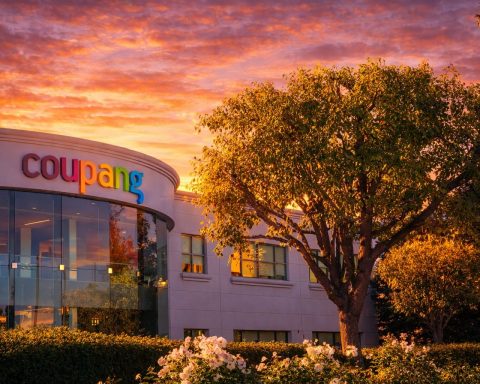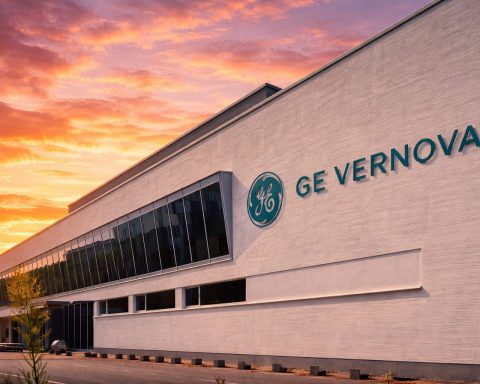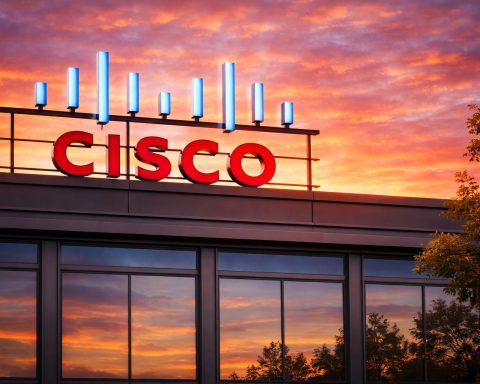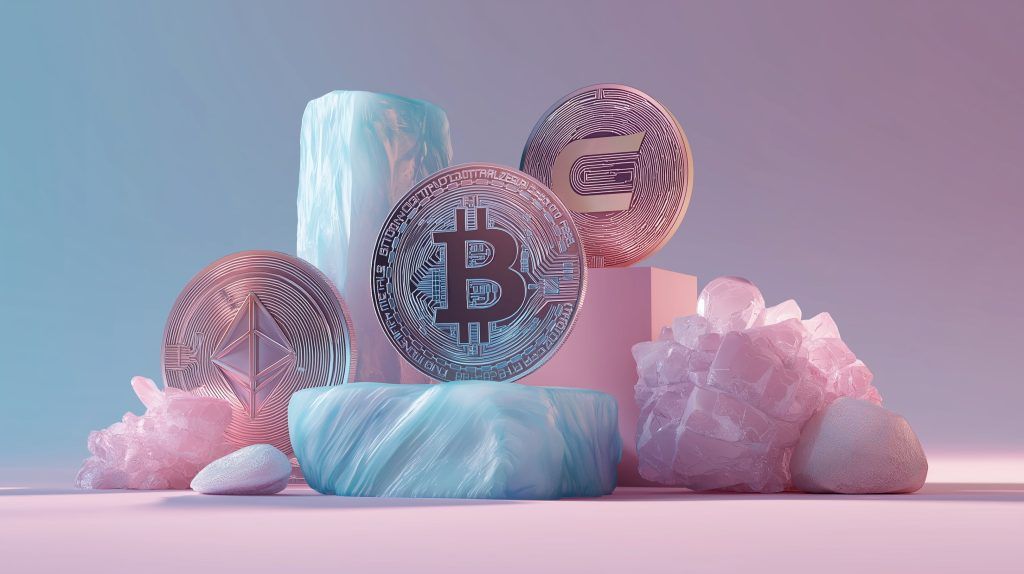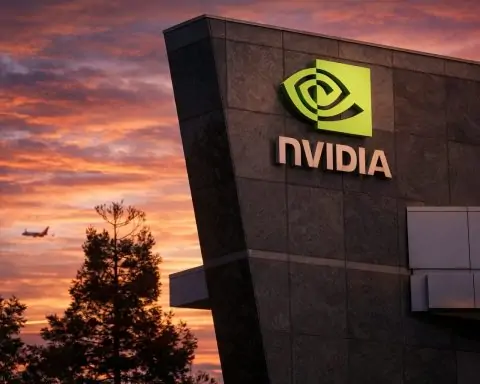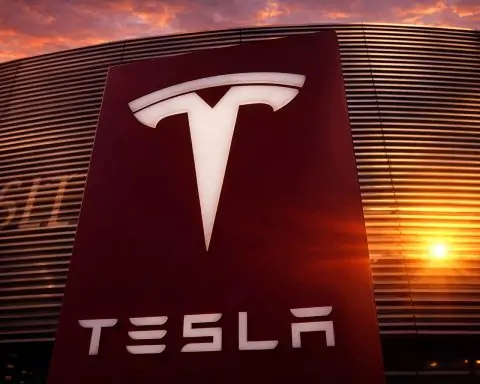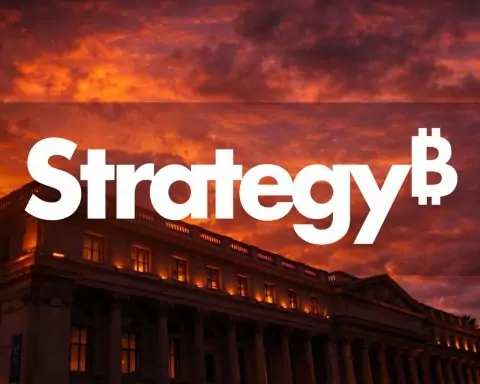- Nvidia launched the Jetson AGX Thor on August 25, 2025, a $3,499 developer kit marketed as a ‘humanoid robot brain’ with 128GB memory and 7.5x higher AI compute than the Orin, used by Amazon Robotics, Boston Dynamics, Caterpillar, Medtronic and Meta.
- Nvidia shares rose about 1.96% on August 25, 2025 to $181.48, are up over 35% year-to-date, and Nvidia is the world’s most valuable chipmaker at roughly 8% of the S&P 500 by weight.
- Nvidia will sell Thor T5000 production modules for $2,999 each when customers move from prototyping to deployment.
- In China, Cambricon Technologies jumped 11.4% to ¥1,384.93, Hygon Information rose 12.9%, Baidu’s Kunlun unit climbed after a billion-yuan order from China Mobile, and Cambricon posted a 4,230% revenue surge YoY in Q1 2025 with a nosebleed P/E of 4,463x.
- Google Cloud signed a six-year deal worth over $10 billion with Meta Platforms to provide cloud infrastructure, including about 1.3 million GPUs and 1 gigawatt of capacity in 2025.
- Meta Platforms said it will spend hundreds of billions on AI data centers and raised its 2025 capex forecast by $2 billion to $66–72 billion.
- Monday.com fell about 30% after earnings as AI tools raised fears of market share loss and pricing pressure in the SaaS sector.
- C3.ai received a new Nuveen stake of 262,672 shares worth $5.53 million in Q1, with C3.ai trading around $17 on August 26, 2025 and a negative P/E of -7.6 due to ongoing losses.
- Tesla was hit with a $243 million Autopilot verdict after a 2019 crash, rejected a $60 million settlement offer, and said it will appeal while facing NHTSA audits and a California class-action accusing misrepresentation of FSD capabilities.
- Tesla began shipping its first robotaxi-configured vehicles in Austin as part of a pilot program, signaling progress amid regulatory and safety scrutiny.
Major AI stocks made headlines across chipmakers, cloud giants, software firms and even automakers between August 25 and 26, 2025. From Nvidia unveiling a new “robot brain” chip to Google Cloud landing a $10 billion AI deal, and Tesla grappling with a costly Autopilot verdict, investors had plenty to digest. Here’s a comprehensive roundup of the key developments, organized by sector:
Chipmakers: Nvidia’s New ‘Robot Brain’ and the AI Chip Race
- Nvidia Stock Climbs on AI Momentum: Nvidia (NASDAQ: NVDA) shares rose about 1.96% on Aug. 25 to $181.48 ahead of its hotly anticipated earnings, as investors bet on continued “scorching” AI-driven growth [1]. The stock is up over 35% year-to-date, making Nvidia the world’s most valuable chipmaker and now 8% of the S&P 500 by weight [2].
- Jetson Thor “Robot Brain” Launch: Nvidia launched its Jetson AGX Thor on Aug. 25 – a $3,499 developer kit dubbed a “humanoid robot brain” for AI-powered machines [3]. Jetson Thor packs a new Blackwell GPU with 128GB memory and delivers 7.5× higher AI compute than the prior Orin chip, enabling robots to run large generative AI models in real time [4] [5]. Early adopters include Amazon Robotics, Boston Dynamics, Caterpillar, Medtronic and Meta, among others [6]. Nvidia will sell production modules (Thor T5000) for $2,999 each at scale once customers move from prototyping to deployment [7].
- Robotics = Next Growth Frontier: “We’ve built Jetson Thor for the millions of developers working on robotic systems that interact with and increasingly shape the physical world,” said Nvidia CEO Jensen Huang, calling Thor “the ultimate supercomputer to drive the age of physical AI and general robotics.” [8] [9] Huang has emphasized that robotics is Nvidia’s most important growth avenue outside of core AI data centers, noting that AI has already “tripled [Nvidia’s] sales over the past two years.” [10] While robotics currently contributes only ~1% of Nvidia’s revenue, that segment’s sales jumped 72% year-on-year in the latest quarter [11]. Nvidia’s strategy is to provide the computing “brains” and software platforms for autonomous machines, rather than building robots itself [12]. This push could “further solidify [Nvidia’s] growth trajectory” as AI expands from cloud data centers into the physical world [13].
- China Headwinds, Investors Shrug: Nvidia did face turbulence in China, where authorities reportedly told tech firms to stop using Nvidia’s older H20 AI chips after a U.S. official’s provocative remarks [14] [15]. However, the H20 is based on an older architecture and no longer central to Nvidia’s product line. Indeed, Nvidia’s stock still rose ~1.7% in the wake of China’s informal ban, as traders deemed the impact minimal [16]. Investors remain focused on Nvidia’s cutting-edge Blackwell chips (like Thor and the upcoming data-center GPUs) that drive its fast-growing revenue and profits [17]. The real test was expected on Aug. 27 when Nvidia reports earnings – a “crucial test” of the AI stock frenzy that could sway the broader market [18].
China’s AI Chip Stocks Soar on Domestic Rally
- Homegrown Champs Surge: In Chinese markets, AI chipmakers saw their stocks skyrocket on Aug. 25 amid optimism for domestic alternatives. Cambricon Technologies – a leading Chinese AI chip designer – jumped 11.4% to ¥1,384.93, nearing the title of China’s priciest stock as its shares have risen over 560% since late 2024 [19] [20]. Another chip firm, Hygon Information (688041.SH), leapt 12.9% on the day and is up more than 50% since mid-August [21] [22]. Even tech giant Baidu got a boost – its Hong Kong-listed shares climbed 5.7% after Baidu’s chip unit Kunlun secured a billion-yuan order from China Mobile for AI chips [23] [24].
- Drivers – Nvidia Woes = Local Opportunity: Investors are betting that U.S. export curbs on Nvidia will translate into market share for Chinese chipmakers [25]. Beijing’s regulators recently summoned Nvidia over potential security risks of its H20 chips and even imposed a 15% levy on Nvidia’s China chip sales to funnel money into domestic tech [26]. Reports that Nvidia told suppliers like Samsung to halt H20 production (after new U.S. rules) further fueled the rally in Chinese AI stocks [27] [28]. “Uncertainty surrounding Nvidia” has “improved the outlook for China’s computing industry, creating an ‘accelerated replacement window’ for homegrown chips,” according to Guohai Securities analysts [29]. In short, Chinese firms like Cambricon are positioning to capture demand if Nvidia’s most advanced GPUs become harder to obtain in China.
- Fundamentals and Hype: Despite minimal current profits (Cambricon still operates at a net loss [30]), these stocks are buoyed by explosive revenue growth and government backing. Cambricon’s revenue jumped 4,230% year-on-year in Q1 2025 thanks to AI server chip sales [31]. Both the hype and policy tailwinds are strong – China’s government and telecom giants are investing heavily in indigenous AI silicon, aiming to reduce reliance on U.S. suppliers. The result: an investor fervor for domestic AI chip makers that has made Cambricon nearly as expensive per share as Kweichow Moutai, the famed liquor stock [32]. Analysts caution, however, that valuations (Cambricon carries a nosebleed 4,463× P/E ratio [33]) imply a lot of future success already priced in. Any missteps in China’s AI push or easing of U.S. chip restrictions could test this rally’s durability.
Cloud & AI: Google Lands $10 Billion Meta Deal as Cloud Wars Heat Up
- Google’s Big Win with Meta: In a landmark alliance, Google Cloud (Alphabet, NASDAQ: GOOGL) has signed a six-year deal worth over $10 billion to provide cloud infrastructure to Meta Platforms (NASDAQ: META) [34]. The agreement – revealed by insider sources on Aug. 22 – will see Meta use Google’s servers, storage and networking to power its growing AI needs [35]. It’s Google’s second major AI cloud customer in recent months, after a similar deal to add OpenAI (maker of ChatGPT) to Google Cloud was reported in June [36] [37]. Meta’s massive investment underscores the “AI arms race” among cloud giants: multi-billion-dollar compute deals are rolling in even as some fear an AI bubble [38].
- Meta’s AI Ambitions (and Spending): Meta CEO Mark Zuckerberg has been vocal that the company will “spend hundreds of billions of dollars” in coming years on AI data centers [39]. Just last month, Meta raised its 2025 capital expenditure forecast by $2 billion (to $66–72 billion) to fund AI infrastructure [40]. The Google partnership gives Meta access to an immense pool of compute power – reportedly 1.3 million GPUs and 1 gigawatt of capacity in 2025 – to support projects like its new Llama 2 AI models and generative AI features across Facebook, Instagram, and its metaverse initiatives [41]. In Meta’s stellar Q2 earnings call, Zuckerberg described a vision to “bring personal superintelligence to everyone… putting this power in people’s hands” – signaling Meta’s intent to weave AI into all its products [42]. (Notably, Meta is also offloading $2 billion in data center assets to outside partners to help fund this buildout [43], showing how heavy the AI compute burden is.)
- Cloud Rivals and Quotes: For Google, landing Meta is a major coup in the cloud wars against Amazon Web Services and Microsoft Azure. Google Cloud’s revenue already jumped 32% last quarter – “small but mighty” within Alphabet’s results [44] [45] – and this deal adds a marquee client to its roster. “AI is positively impacting every part of the business, driving strong momentum,” Alphabet CEO Sundar Pichai said in July, emphasizing how demand for AI workloads is boosting Google Cloud [46]. Industry watchers note that Google’s strategy of openness (it was surprisingly willing to work with OpenAI, a rival to its own DeepMind unit [47]) is paying off to fill its data centers. The Meta deal also reflects how even tech titans sometimes prefer renting cloud capacity over building from scratch – especially when trying to scale “to the tune of 1 GW” of AI compute in a single year [48]. For investors, these partnerships signal that cloud providers stand to benefit directly from the AI revolution, capturing the surging demand for model training and inference power. Alphabet shares have been strong in 2025, and news of big-ticket cloud wins can further bolster confidence in its AI trajectory.
Software & Services: AI Shake-Up for SaaS Firms (Monday.com, Salesforce, C3.ai & More)
- “AI Ate Our Lunch” – Monday.com’s Plunge: The enterprise software sector is grappling with the disruptive potential of AI. Case in point: last week, Monday.com – a $9 billion work-management SaaS company – saw its stock crater ~30% in a single day after earnings [49]. Why? Its results and outlook raised fears that new AI-powered tools (some able to generate code or project plans automatically) could steal market share or force incumbents to cut prices [50]. Monday.com’s crash sparked a broader selloff in software-as-a-service (SaaS) stocks across the U.S. and Europe [51]. As Reuters Breakingviews put it, the specter of the “death of software” – with AI as the killer – has begun haunting markets [52]. Growth at many cloud software firms has already cooled from pandemic-era highs (sector average revenue growth is expected to slow to ~9% this year, down from 20%+ in 2021–22) [53], and now AI-driven startups are giving customers more choices – and reasons to rethink pricey subscriptions.
- Big Players Adapt (Salesforce, Adobe): Even the giants aren’t immune. Adobe (ADBE), for example, faces emerging rivals in creative software as Alphabet and OpenAI develop AI tools for generating ads, videos and code [54]. And Salesforce (CRM) has begun overhauling its business model in response to AI – introducing usage-based “Flex” pricing and AI add-ons instead of charging strictly per-seat [55]. While embedding AI into their platforms can make SaaS offerings more compelling, it also injects volatility: usage-based billing means less predictable revenue streams, a far cry from the steady subscription fees investors loved [56]. “Valuations haven’t fully digested the AI threat yet,” warns Reuters columnist Karen Kwok, noting that median forward revenue multiples for the SaaS index (~4.3×) are still near where they were when ChatGPT launched [57]. In other words, many software stock prices may not yet reflect the growth challenges ahead from AI-fueled competition.
- C3.ai and the AI Pure-Plays: On the flip side, companies positioned as enablers of AI are drawing interest. C3.ai, Inc. (NYSE: AI) – an enterprise AI software provider – saw Nuveen LLC take a new $5.53 million stake (262,672 shares) in Q1, according to an Aug. 26 disclosure [58]. Other institutional investors (from Susquehanna to various hedge funds) have also been accumulating C3.ai shares in recent quarters [59]. This comes despite a flurry of analyst downgrades over the summer – several Wall Street firms cut C3’s price target into the low-$20s or teens, citing continued losses and mixed execution [60]. C3.ai’s stock closed around $17 on Aug. 26 [61], down sharply from its 52-week high earlier in the year. The company is still losing money (market cap ~$2.3 billion, with a P/E of -7.6 indicating negative earnings [62]). But the Nuveen vote of confidence suggests some big investors expect a turnaround as demand for AI solutions grows. C3.ai’s management claims that interest in its AI platforms (for industries like energy and defense) is rising thanks to the hype around generative AI. The tug-of-war between believers and skeptics of C3.ai encapsulates the wider theme in software: will AI be a growth driver for incumbents that harness it, or a growth killer via new competition? So far in 2025, it’s been both – creating stark winners and losers in the market, and a new calculus for valuing software businesses.
Automation & Autos: Tesla’s Autopilot Verdict Jolts Self-Driving Hopes
- $243 Million Verdict and Tesla’s Response: The legal risks of AI in driving came into focus after a U.S. jury ordered Tesla to pay $243 million in a landmark Autopilot crash case. In a trial stemming from a 2019 accident, jurors found Tesla’s Autopilot driver-assistance defective, holding the company liable for a fatal collision [63] [64]. On Aug. 25, court filings revealed Tesla had rejected a $60 million settlement offer before the trial – a decision that backfired given the much larger verdict [65] [66]. Tesla insists its software was not at fault (blaming an inattentive driver) and has vowed to appeal. In a statement, the company said the jury’s decision “only works to set back automotive safety and jeopardize… efforts to develop life-saving technology.” [67] Tesla essentially argued that punishing Autopilot will slow down innovation in self-driving cars. However, the outcome shook confidence in Tesla’s Full Self-Driving (FSD) program and highlights the potential liabilities facing autonomous vehicle (AV) efforts.
- Experts: “Black Eye” for Robotaxi Ambitions: “The timing… is awful for Tesla in light of the FSD rollouts and robotaxis,” warned Aaron Davis, a tech law expert, noting that “now there’s essentially an opinion that some aspect of Tesla’s business is not safe and maybe the safety [it] advertises isn’t what it’s cracked up to be.” [68] The high-profile loss is a “black eye” that could make regulators more cautious about green-lighting Tesla’s robotaxi expansion [69] [70]. CEO Elon Musk has been pushing to deploy autonomous Tesla robotaxis across the U.S., with a goal of reaching half the population by year-end [71]. That vision – a major part of Tesla’s ~$800+ billion market valuation (Musk often touts Tesla as an AI/robotics company as much as a carmaker) – now faces new hurdles. “Public perception of this verdict will fuel pressure on regulators,” said attorney Mike Nelson, meaning authorities may demand more proof of safety before allowing fully self-driving services [72]. In practical terms, Tesla might find it harder to convince state and federal regulators that FSD is road-ready in its current form.
- Mounting Scrutiny – NHTSA & Class Actions: The courtroom defeat comes amid wider scrutiny of Tesla’s AI driving tech. The U.S. National Highway Traffic Safety Administration (NHTSA) opened an audit on Aug. 21 into whether Tesla delayed reporting crashes involving Autopilot and FSD features [73] [74]. The regulator noted some crash reports were filed months late, in violation of reporting requirements [75] [76]. NHTSA is also separately investigating instances of Teslas on FSD crashing in low-visibility conditions (and even how Tesla’s new robotaxis in Austin are being monitored) [77] [78]. Adding to the pressure, a California judge ruled on Aug. 19 that Tesla must face a class-action lawsuit from owners who allege Elon Musk & the company misled them for years about self-driving capabilities [79] [80]. Thousands of customers who paid $5,000–$15,000 for “Full Self-Driving” packages — which still require an attentive driver — could potentially claim damages if the suit prevails. Tesla denies wrongdoing in all these cases, but the convergence of legal challenges is significant. It suggests that as Tesla pushes the envelope on AI, it is encountering increased legal and regulatory pushback over safety and transparency.
- Investor Impact: So far, Tesla’s stock has been resilient – buoyed by broader tech optimism – but these developments inject uncertainty. Many analysts still foresee huge long-term value in Tesla’s AI endeavors (robotaxis, AI-powered humanoid robots, etc.), which Musk believes will drive the company’s next phase of growth. Brokerage Piper Sandler, for instance, told clients the recent verdict “does not have direct implications for [Tesla’s] FSD rollout” given improvements since 2019 [81]. However, the spate of lawsuits and investigations reminds investors that Tesla’s march toward autonomous driving is not a straight line. The company may need to spend more on legal defense, settlements, or even hardware retrofits (to add more sensors) if required by regulators. In the worst case, widespread perception of Autopilot/FSD as unsafe could dampen consumer adoption of Tesla’s self-driving software – a key revenue stream. For now, Tesla is pressing ahead (it recently started shipping its first “robotaxi”-configured vehicles in Austin as a pilot [82]), but the road to full autonomy just got a lot bumpier. Investors will be watching how Tesla navigates this maze of technical, legal, and public relations challenges in the coming months.
Sources: The above roundup is based on reporting from Reuters, company press releases, and market data between Aug. 25–26, 2025. Key sources include Reuters market summaries [83] [84], Nvidia’s official press release [85] [86] and an analysis of its robotics strategy [87] [88], a Reuters Breakingviews commentary on AI’s impact on software firms [89] [90], Reuters coverage of Google’s cloud deal with Meta [91] [92] and RCR Wireless insights with quotes from tech leaders [93] [94], filings on C3.ai’s investors and analysts [95] [96], and Reuters legal news on Tesla’s Autopilot case and related actions [97] [98]. Each development highlights the multifaceted ways AI is reshaping company fortunes and investor sentiment in real time. [99] [100] [101] [102] [103]
References
1. www.reuters.com, 2. www.reuters.com, 3. coincentral.com, 4. coincentral.com, 5. investor.nvidia.com, 6. investor.nvidia.com, 7. coincentral.com, 8. investor.nvidia.com, 9. investor.nvidia.com, 10. coincentral.com, 11. coincentral.com, 12. coincentral.com, 13. coincentral.com, 14. www.nasdaq.com, 15. www.nasdaq.com, 16. www.nasdaq.com, 17. www.nasdaq.com, 18. www.reuters.com, 19. www.caixinglobal.com, 20. www.caixinglobal.com, 21. www.caixinglobal.com, 22. www.caixinglobal.com, 23. www.caixinglobal.com, 24. www.caixinglobal.com, 25. www.caixinglobal.com, 26. www.caixinglobal.com, 27. www.caixinglobal.com, 28. www.caixinglobal.com, 29. www.caixinglobal.com, 30. www.caixinglobal.com, 31. www.caixinglobal.com, 32. www.caixinglobal.com, 33. www.caixinglobal.com, 34. www.reuters.com, 35. www.reuters.com, 36. www.reuters.com, 37. www.reuters.com, 38. www.rcrwireless.com, 39. www.reuters.com, 40. www.reuters.com, 41. www.rcrwireless.com, 42. www.rcrwireless.com, 43. www.reuters.com, 44. www.rcrwireless.com, 45. www.rcrwireless.com, 46. www.rcrwireless.com, 47. www.reuters.com, 48. www.rcrwireless.com, 49. www.reuters.com, 50. www.reuters.com, 51. www.reuters.com, 52. www.reuters.com, 53. www.reuters.com, 54. www.reuters.com, 55. www.reuters.com, 56. www.reuters.com, 57. www.reuters.com, 58. www.marketbeat.com, 59. www.marketbeat.com, 60. www.marketbeat.com, 61. www.marketbeat.com, 62. www.marketbeat.com, 63. www.reuters.com, 64. www.reuters.com, 65. www.reuters.com, 66. www.reuters.com, 67. www.reuters.com, 68. www.reuters.com, 69. www.reuters.com, 70. www.reuters.com, 71. www.reuters.com, 72. www.reuters.com, 73. www.reuters.com, 74. www.reuters.com, 75. www.reuters.com, 76. www.reuters.com, 77. www.reuters.com, 78. www.reuters.com, 79. www.reuters.com, 80. www.reuters.com, 81. www.reuters.com, 82. www.reuters.com, 83. www.reuters.com, 84. www.reuters.com, 85. investor.nvidia.com, 86. investor.nvidia.com, 87. coincentral.com, 88. coincentral.com, 89. www.reuters.com, 90. www.reuters.com, 91. www.reuters.com, 92. www.reuters.com, 93. www.rcrwireless.com, 94. www.rcrwireless.com, 95. www.marketbeat.com, 96. www.marketbeat.com, 97. www.reuters.com, 98. www.reuters.com, 99. coincentral.com, 100. www.nasdaq.com, 101. www.rcrwireless.com, 102. www.reuters.com, 103. www.reuters.com

